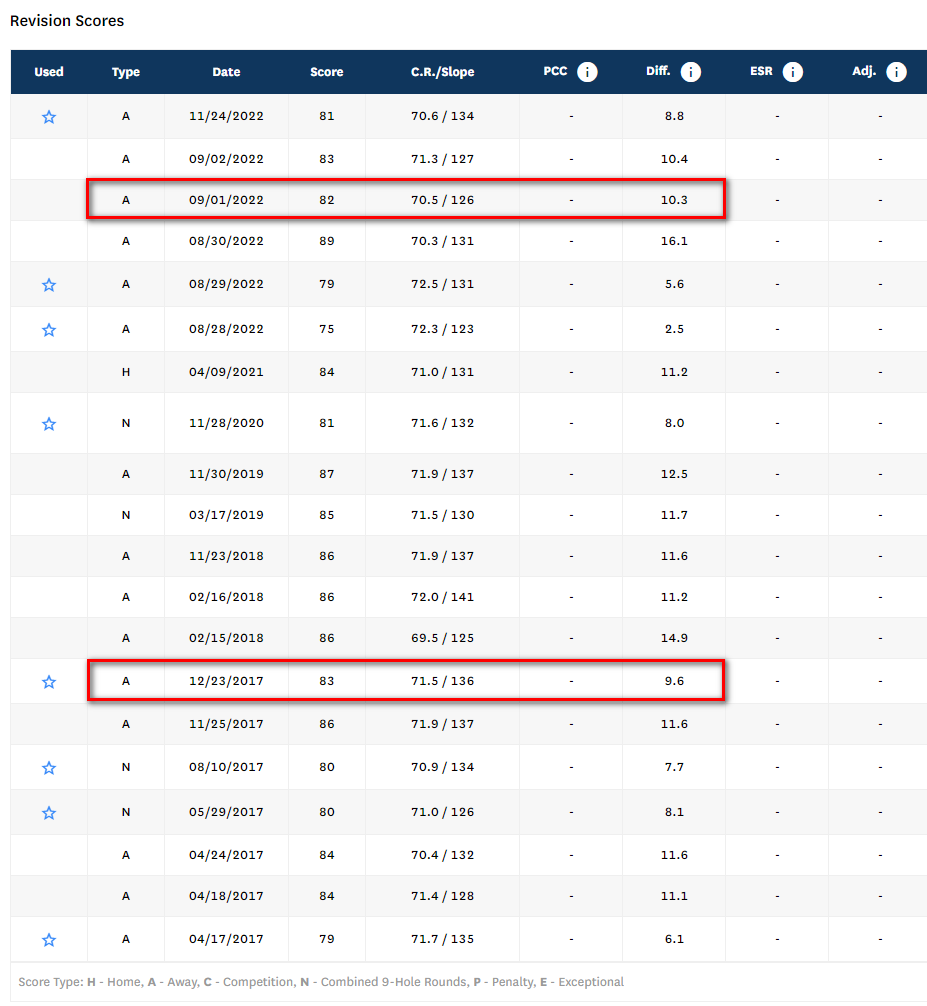When it comes to calculating a Handicap Index, we have all heard about using 8 of your last 20 scores. But, it's not truly an average of your lowest 8 scores, it is the average of your lowest 8 score differentials out of your most recent 20 scores.
Differentials are the values seen in your scoring record that takes into account the difficulty of the set of tees you are playing along with the score. We can all agree that an 85 at the TPC Sawgrass - Stadium Course back tees is not the same as shooting an 85 at your local club's front tees. This difference is accounted for in the Handicap Index calculation of a differential.
How is a Score Differential calculated?
A Score Differential measures the performance of a round in relation to the relative difficulty of the course that was played, measured by the Course Rating™ and Slope Rating® . The result of the daily playing conditions calculation (PCC) is also included in the Score Differential calculation, which may provide an adjustment if course and/or weather conditions significantly impacted scores on that day.
A Score Differential is calculated using the following formula:
- (113 / Slope Rating) x (Adjusted Gross Score - Course Rating - PCC adjustment)
There may be additional adjustments to the Score Differential, such as an exceptional score reduction or Committee-applied adjustment. These would be clearly identified within the scoring record.
(Rule 5.1, 5.9 and 7.1a, Rules of Handicapping)
As seen in the picture to the right, you will notice an 83 counts towards the Index whereas the 82 does not.
So, with this new education, you now know a higher score may actually result in a better differential and still count towards your Handicap Index!





